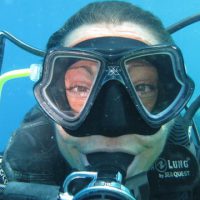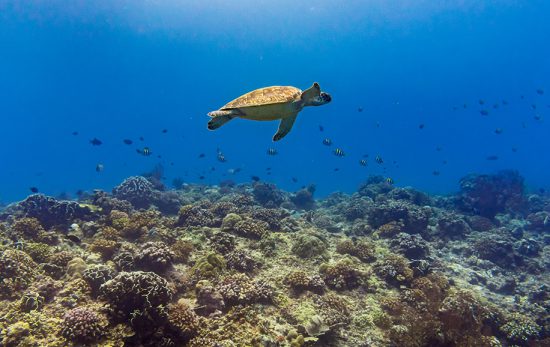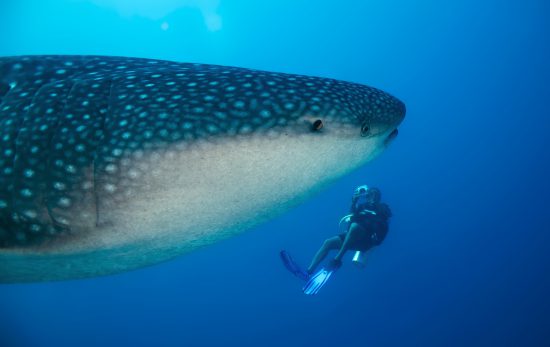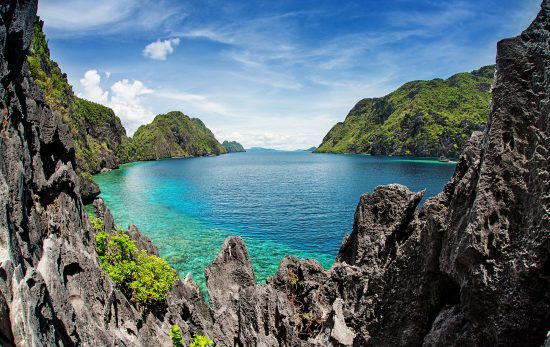Coron in the Philippines originally made a name for itself in scuba diving circles as a wreck diving mecca. The numerous wrecks that lay beneath the surface put Coron firmly on the map, but there is so much more to this region than its attraction to those with a ‘lust for rust’.
Coron is an absolute must for any nature lover. Its dramatic limestone cliffs surrounding magical aquamarine lagoons are like scenes from Jurassic Park, and the seemingly endless lush, green vegetation adds to its ‘land-that-time-forgot’ vibe. This is a destination for those who want to escape the hustle and unwind surrounded by tropical nature and incredible scenery.
Underwater, Coron’s wrecks (which lie within recreational diving depths) and wartime history are an undeniable draw, but that’s not all that you’ll find underwater. Here are 10 of the top dive sites in Coron.
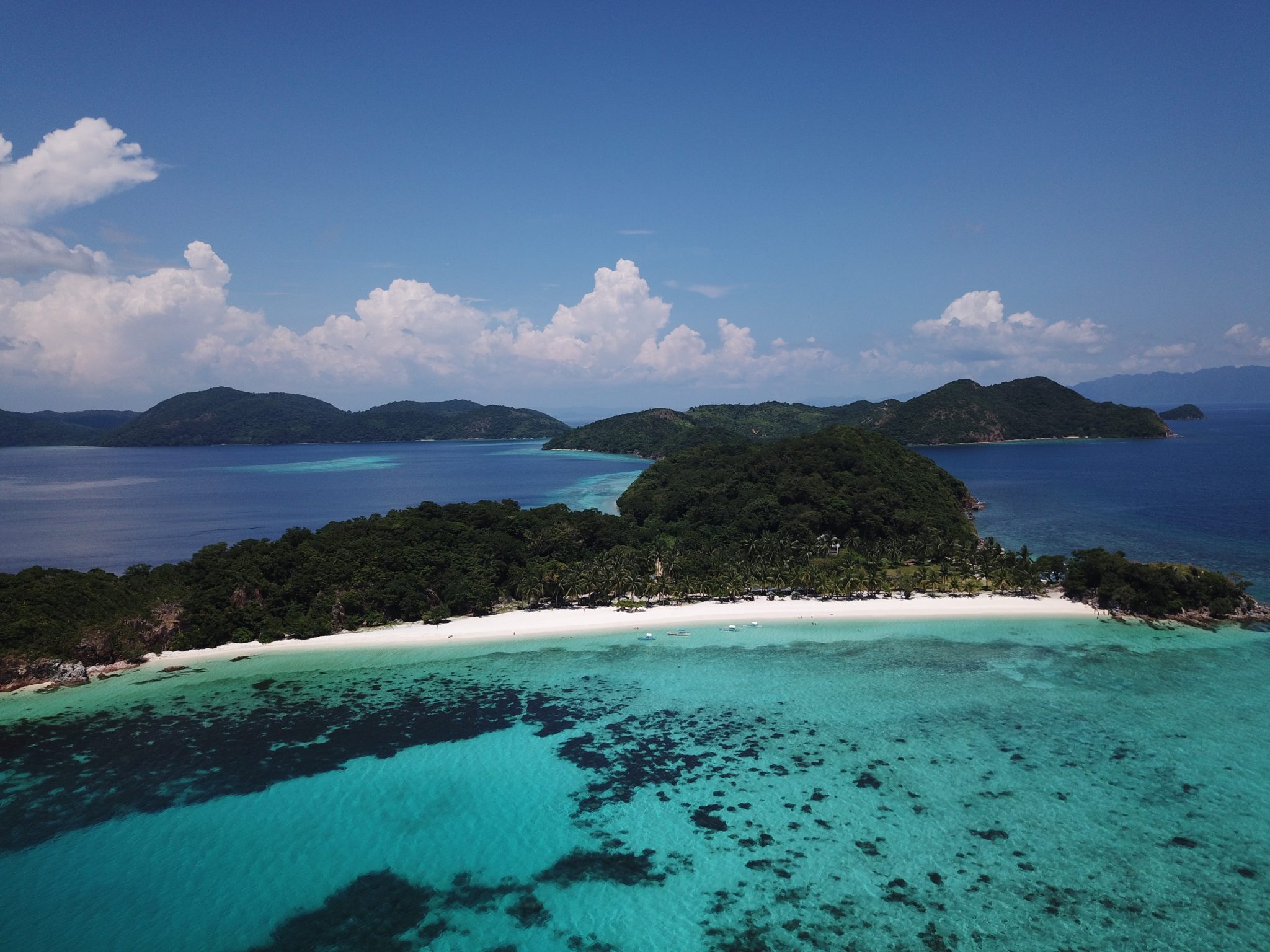
1. Okikawa Maru
This is one of Coron’s shallower wrecks that teems with life! The main deck sits at 16 meters/52 feet, and the deepest point at 26 meters/85 feet. This 160-meter/525-foot-long wreck is encrusted in coral and home to a high density of critters including colorful nudibranch, which can be found living among the structure. Look out for large schools of snapper, sweetlips, batfish and barracuda, surrounding the wreck.
2. The Akitsushima
This 118-meter/387-foot-long seaplane tender lies relatively intact on her port side. On the sandy bottom to the side of the wreck is a huge crane which attracts schools of batfish and barracuda, making incredible underwater photography subjects. The engine room is home to four large engines and other machinery and is an excellent penetration opportunity for experienced wreck divers. Marine life is abundant around the wreck, particularly in the shaded areas and crevices where resident lionfish, moray eels and other interesting critters are found.
3. Morazan (Ekkai Maru)
The Morazan (which is called the Ekkai Maru by some dive shops in the area as this was the name given to the Morazan by the Japanese after they captured the ship during WWII) was a passenger cargo vessel built in 1907 and later commandeered for WWI by the British. She was captured by the Japanese who then later utilized her in WWII. At just under 92 meters/300 feet in length, there is plenty to explore here. The cargo holds are empty, but the boilers in the generously sized engine room are still intact. The large proportions of this dive site make it suitable for all experience levels, although only those with proper training should penetrate the wreck.
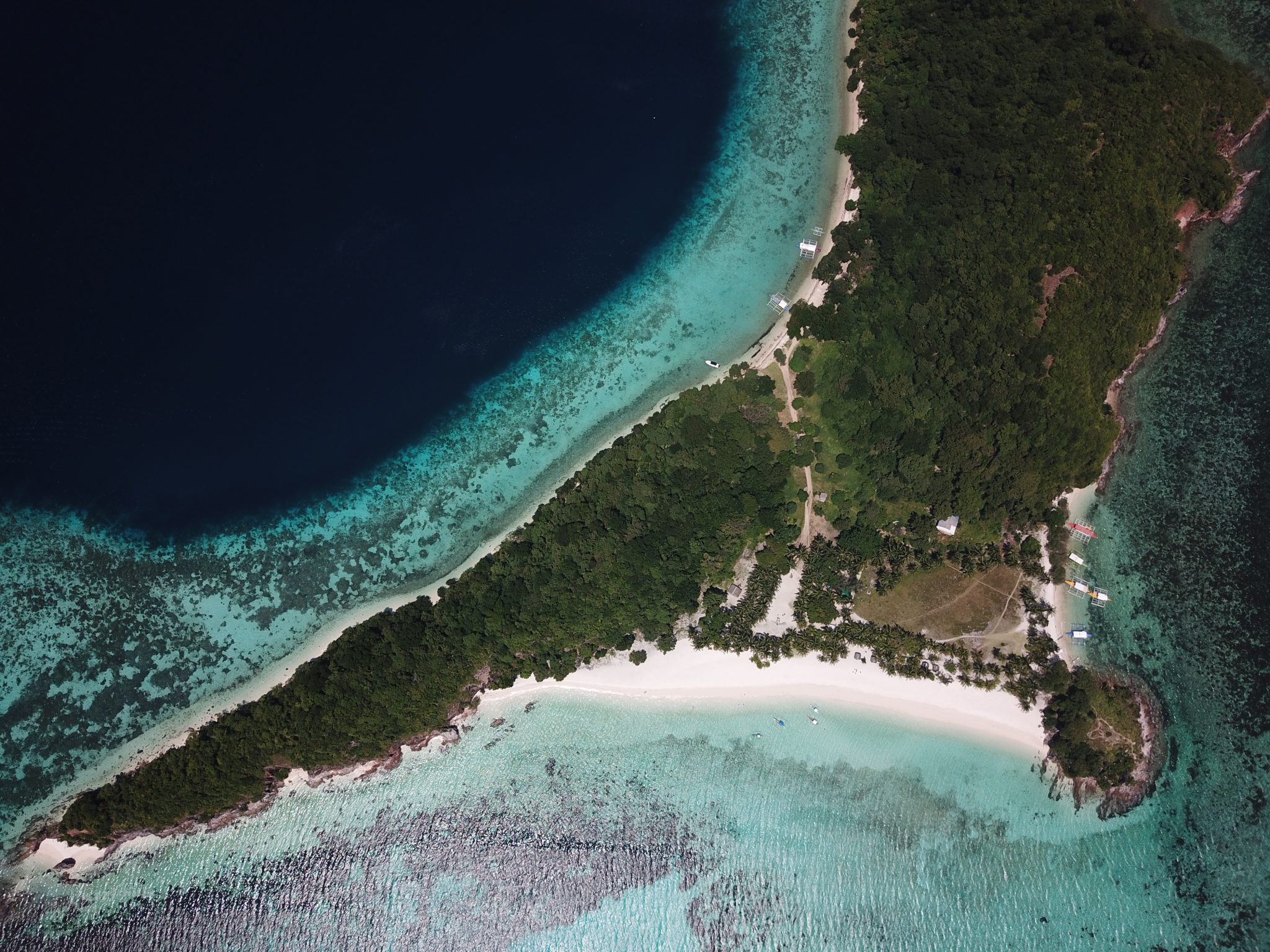
4. Irako
This refrigeration supply ship lays between 30 meters/100 feet and 45 meters/150 feet. It previously offered several routes and penetration possibilities, but the ceiling of the ship recently collapsed. Look out for the tornado of schooling jacks just off the wreck as well as snapper, groupers, barracuda, eels, turtles, lionfish and a host of macro critters on and above the deck. This is a firm favorite with many Coron wreck divers and for good reason!
5. Olympia Maru
The Olympia Maru, another of the six WWII wrecks in Coron’s underwater treasure chest, rests upright at a depth ranging between 18 meters/59 feet and 32 meters/105 feet. This 122-meter/400-foot-long cargo ship was sunk during World War II and is now a vibrant dive site teeming with marine life. Divers with the proper training can explore the spacious cargo holds, now home to an array of tropical fish. The relatively shallow depth makes this wreck accessible for divers of most experience levels, and the clear waters often offer good visibility.
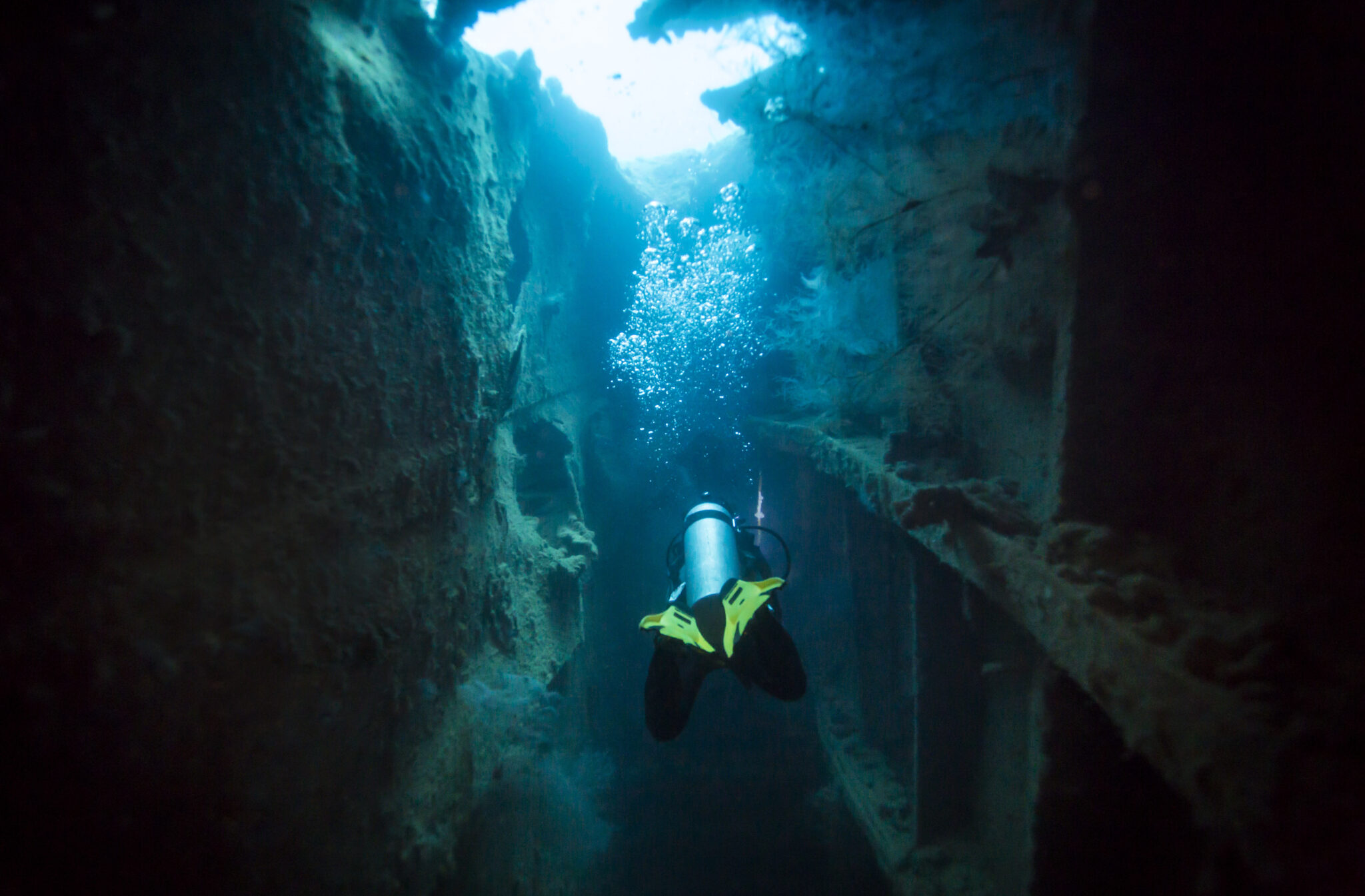
6. Kogyo Maru
Lying on its starboard side at depths ranging from 22 meters/72 feet to 34 meters/112 feet, the Kogyo Maru is an intriguing dive site. Originally a Japanese auxiliary supply ship, wreck divers can now explore the Kogyo Maru’s expansive holds, which interestingly contain construction materials and vehicles intended for building airfields. The exterior of the wreck is a hotspot for large fish, such as sweetlips and trevallies, and the occasional sea turtle glides by. This site is best suited for Advanced Open Water Divers or above due to its depth and the potential for strong currents.
7. Seven Islands Reef
Known locally as ‘Siete Picados’, this marine protected reef is home to a thriving marine eco-system. The sloping reef (which bottoms out at around 24 meters/79 feet) is teeming with a variety of reef fish and critters. Look into crevices and shaded areas for nudibranch, flatworms, eels, lionfish, scorpionfish and camouflaged bottom dwellers.

8. Barracuda Lake
Out of the seven lakes around Coron, Barracuda Lake is one of the two that can be visited. While this lake may not pack a punch on the marine life front, it never fails to deliver a sensory overload. The lake offers both salt water and fresh water layers which sit one on top of the other, resulting in a pycnocline effect. This oil-on-water layer where the two meet is incredibly beautiful. The silty lake floor resembles a planetary surface, and all of this is set before a dramatic backdrop of an immense limestone rock face. Barracuda Lake is one diving experience you won’t forget!
9. Cathedral Cave
Situated on the east of Coron Island, access to this underground lake starts via a tunnel opening at around six to 10 meters/19 to 32 feet. Once inside the tunnel, you’ll find numerous lobsters, crabs and mollusks which have taken up residence. The tunnel leads to a large chamber in which it’s possible to surface and see the beautiful stalactites as well as a window through which the light streams in. There are bats that fly around inside the chamber. A little further is another passage leading to an additional air chamber and more rock formations. This is a beautiful dive for experienced divers and one that finishes alongside a vibrant coral wall outside of the tunnel opening.
10. Dimakya Island
Dive sites around Dimakya Island boast a healthy reef system made up of a vibrant mix of hard and soft corals. During months when the water temperature is at its coolest, cephalopods (both octopus and cuttlefish) come to this area to mate and lay eggs. Diving here reveals a varied mix of marine life from minute, macro crustaceans through to colorful reef fish.

A Brief History of the Wrecks in Coron
On September 24, 1944, one of the most important attacks of World War II took place in Coron. A Japanese supply fleet, which had arrived in Coron on September 23rd, was attacked by a squadron of US bombers, who were undertaking the furthest range air attack ever carried out at that time. Three US planes were lost during the attack through running out of fuel.
When to Dive in Coron?
The best time to dive in Coron is from October to June. This is the dry season in the region. Note that December through to March offers the best weather, while March to May brings the best visibility when diving on the wrecks.
What to Do in Coron When You Aren’t Diving
When you are not diving in Coron, or if you are traveling with non-divers, there is plenty to do on land.
Here are some of our favorites:
- Take a Coron Town Tour: Coron town is colorful and vibrant. You’ll find loads of opportunities for cultural immersion, beautiful photos and delicious eats.
- Banol Beach: After visiting the town, Banol Beach is a great place to relax. Known as one of the most pristine beaches in the Philippines, Banol is well worth the effort.
- Dine in Style: Coron’s restaurant scene has gone from strength to strength over the years, and there are many impressive restaurants and small eateries to enjoy.
- Trek Mount Tapyas: Over 700 steps will take you to the top of Tapyas where you will have phenomenal views over the bay.
- Maquinit Hot Springs: Relax your muscles in the 40 degree Celsius (104 degree Fahrenhait) geothermal waters of Maquinit!
If you’d like to dive in Coron, why not start planning your trip? Learn more about diving in the Philippines and locate a PADI Dive Shop today!
